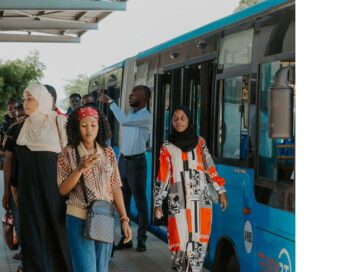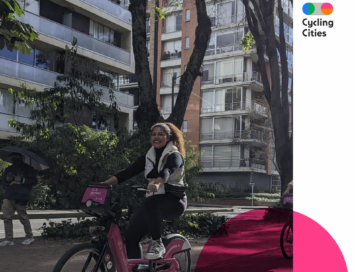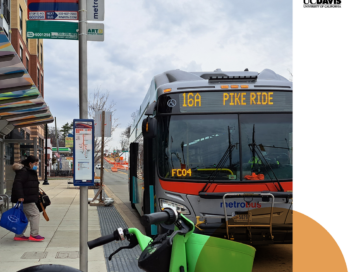Europe's Vibrant New Low Car(bon) Communities
 Download the full report:
Original Layout with Spreads
Desktop Printer Version
Source: Nicole Foletta and Simon Field
Download parts of the report:
Download the full report:
Original Layout with Spreads
Desktop Printer Version
Source: Nicole Foletta and Simon Field
Download parts of the report:
 Executive Summary
Executive Summary
 Greenwich Millennium Village, Britain
Greenwich Millennium Village, Britain
 GWL Terrein, Amsterdam, The Netherlands
GWL Terrein, Amsterdam, The Netherlands
 Hammarby Sjostad, Stockholm, Sweden
Hammarby Sjostad, Stockholm, Sweden
 Houten, Utrecht, The Netherlands
Houten, Utrecht, The Netherlands
 Sihlcity, Zurich, Switzerland
Sihlcity, Zurich, Switzerland
 Stellwerk 60, Cologne, Germany
Stellwerk 60, Cologne, Germany
 Vastra Hamnen, Malmo, Sweden
Vastra Hamnen, Malmo, Sweden
 Vauban, Freiburg, Germany [/panel]
Moving is a time to reevaluate the stuff you own. Boxes of family photos? Coming. That ratty old couch? Not coming. But what if you could leave something even bigger behind? Like your car? New developments are often associated with sprawl and more driving. But eight communities across Europe demonstrate there is a different model. ITDP Europe investigated these developments and found by using smart urban and transportation planning and design, they have created communities with lower car ownership rates and less driving than nearby developments of comparable sizes and age.
As a result these communities have less pollution, greenhouse gas emissions, public health issues and other negative externalities associated with driving. These new developments use a combination of “push” measures to discourage private car use and “pull” measures to improve the attractiveness of walking, cycling, transit and various forms of shared vehicle use. As the report demonstrates, these measures work, and could be applied in other new developments around the world, particularly in abandoned industrial sites or on other previously developed land.
Eventually these measures should be applied to all urban development, in order to minimize the need for driving and maximize the opportunities for healthier, more sustainable forms of transportation. Therefore ITDP presents these case studies, identifies lessons learned and compares the planning, design and travel demand management techniques used so that others might follow the lead of these eight communities. Each case study includes background information on the origins of the development and how these best practices were incorporated at early stages of the developments’ planning processes, before describing individual measures in more detail. Quantitative data on vehicle ownership, modal split and transport-related emissions are
It is worth noting that the most successful “car-free” and largely “parking-free” developments reviewed had well-organized grassroots support for the concept from the outset. Planners and decision makers should look for willing partners as they undertake these endeavors. And they should foster community participation to build support as the project evolves, and to ensure the endurance of the vision for the development once it is built.
The top lessons learned from these case studies closely align with the Principles for Transport in Urban Life, and are as follows:
1. Develop neighborhoods for walking and prioritize bicycling networks. The majority of developments in the case studies provide direct, safe and comfortable walking and cycling routes, and plentiful covered cycle parking. They also use a technique called “filtered permability” to make travel by bicycle or foot more direct than by car (Table 2), and locate bicycle parking closer to homes than car parking. This gives walking and cycling a competitive advantage over the car. Some are beginning to use bike sharing to encourage occasional bike use by visitors and residents alike.
These developments are built with pedestrians and cyclists in mind; dense networks of streets allow pedestrians and cyclists to pass, even where cars cannot (filtered permeability). This design is reinforced with low speed limits and traffic calming. By making car use less convenient than other modes, residents are subtly nudged to consider other modes.
2. Provide high-quality transit.
The transport in all of the case study areas is responsive to resident needs, and therefore has high mode share. Stops are within half a kilometer of every home, and service frequencies are at least every 15 minutes. Integration into the regional transit network and long service hours all make riding convenient while low-cost period passes keep it affordable. By optimizing conditions for walking, cycling and transit, living car-free becomes more realistic. Many developments also provide nearby carsharing locations to help residents feel more comfortable giving up their private cars.
3. Create compact regions with short commutes and zone new developments for mixed use.
These case studies also suggest that new developments should be planned as closely as possible to existing job centers and other destinations. This makes investments in transit and cycling networks more efficient and effective. Mixed uses (housing, jobs, leisure facilities, shops, grocery stores, etc.) should be incorporated into new developments at site selection and master planning stage, to minimize travel distances, enabling residents to make routine trips on foot or by bicycle, with convenient public transportation offering a realistic alternative to the car.
4. Increase mobility by regulating parking and road use.
In addition to the nudges the urban design of these communities provide, many also use regulations to incentivize and in some cases mandate reduced car use, using a variety of techniques including placing stringent caps on car trip generation and CO2 emissions and relaxing parking minimums if other criteria to reduce car demand are met. In many of the cases, parking supply has been reduced and the parking that does exist is separated spatially and fiscally from housing units. In some cases the planners have also required developers to fund or build transportation infrastructure and services (including mobility management services) as a condition of site approval. Masterplanning competitions can foster further innovation in both the built environment and transportation planning.
5. Market sustainable transportation.
Many of these developments make ongoing efforts to reinforce their founding vision and to empower residents and visitors to make sustainable travel decisions by offering tailored mobility advice, running marketing and awareness campaigns, and through promotions such as free or discounted transit passes or car-sharing membership for new residents. Ongoing measures to encourage low-emission travel behavior are important to ensure the long-term transport sustainability of residents. Planners should consider whether the developers should be asked to fund these initiatives or if there are ways to create dedicated streams of revenue (e.g. by earmarking a portion of parking fees or outdoor advertising fees/space) to fund them over time.
6. Don’t forget the larger policy context.
Transportation policies at the city, regional and national levels play a key role in shaping daily travel behavior and residential locations in the longer-term. Congestion charges, citywide parking management policies, high fuel prices, and high quality transit all influence mode choice, reinforcing site-specific measures such as car-access restrictions, provision of high quality walking and cycling facilities and filtered permeability. All of the case study cities are served by national railroad systems, providing an alternative to the car for longer-distance journeys, thereby complementing measures to discourage car ownership and use in the local area.
In summary, it was found that private car use accounts for less than 35% of all trips made by residents in all of the sites (Stellwerk 60 result inferred from distance-based data), a figure that is generally lower than comparable sites without integrated TDM strategies. Car ownership was found to be no more than 440 vehicles per 1,000 residents in the residential developments, and less than 200 in sites with priced, limited and spatially separated parking: GWL Terrein, Stellwerk 60 and Vauban. These sites generate less than 350 kg of car-related CO2 per capita per annum, equivalent to savings of around two thirds compared with their reference areas. These figures demonstrate both the efficacy of TDM measures and the importance of building in the right location, close to centers of existing economic and social activity.
Further Research Needs
Further household research should be conducted to update the case studies as necessary and to add to the evidence base justifying the implementation of these policies and practices in Western Europe and in new developments around the globe. Additional quantitative research is required to assess both the demand for car-free living and the financial performance — in terms of rental and property prices — of heavily car-reduced and car-free areas. This would encourage local authorities, planners, investors and developers to be more pro-active in considering this type of development, which has been shown to reduce car dependence and transport-related CO2 emissions significantly. Many of the lessons learned are replicable or adaptable for implementation elsewhere: the task now is to communicate the successful and transferable policies to politicians, planners and other relevant stakeholders across the world.]]>
Vauban, Freiburg, Germany [/panel]
Moving is a time to reevaluate the stuff you own. Boxes of family photos? Coming. That ratty old couch? Not coming. But what if you could leave something even bigger behind? Like your car? New developments are often associated with sprawl and more driving. But eight communities across Europe demonstrate there is a different model. ITDP Europe investigated these developments and found by using smart urban and transportation planning and design, they have created communities with lower car ownership rates and less driving than nearby developments of comparable sizes and age.
As a result these communities have less pollution, greenhouse gas emissions, public health issues and other negative externalities associated with driving. These new developments use a combination of “push” measures to discourage private car use and “pull” measures to improve the attractiveness of walking, cycling, transit and various forms of shared vehicle use. As the report demonstrates, these measures work, and could be applied in other new developments around the world, particularly in abandoned industrial sites or on other previously developed land.
Eventually these measures should be applied to all urban development, in order to minimize the need for driving and maximize the opportunities for healthier, more sustainable forms of transportation. Therefore ITDP presents these case studies, identifies lessons learned and compares the planning, design and travel demand management techniques used so that others might follow the lead of these eight communities. Each case study includes background information on the origins of the development and how these best practices were incorporated at early stages of the developments’ planning processes, before describing individual measures in more detail. Quantitative data on vehicle ownership, modal split and transport-related emissions are
It is worth noting that the most successful “car-free” and largely “parking-free” developments reviewed had well-organized grassroots support for the concept from the outset. Planners and decision makers should look for willing partners as they undertake these endeavors. And they should foster community participation to build support as the project evolves, and to ensure the endurance of the vision for the development once it is built.
The top lessons learned from these case studies closely align with the Principles for Transport in Urban Life, and are as follows:
1. Develop neighborhoods for walking and prioritize bicycling networks. The majority of developments in the case studies provide direct, safe and comfortable walking and cycling routes, and plentiful covered cycle parking. They also use a technique called “filtered permability” to make travel by bicycle or foot more direct than by car (Table 2), and locate bicycle parking closer to homes than car parking. This gives walking and cycling a competitive advantage over the car. Some are beginning to use bike sharing to encourage occasional bike use by visitors and residents alike.
These developments are built with pedestrians and cyclists in mind; dense networks of streets allow pedestrians and cyclists to pass, even where cars cannot (filtered permeability). This design is reinforced with low speed limits and traffic calming. By making car use less convenient than other modes, residents are subtly nudged to consider other modes.
2. Provide high-quality transit.
The transport in all of the case study areas is responsive to resident needs, and therefore has high mode share. Stops are within half a kilometer of every home, and service frequencies are at least every 15 minutes. Integration into the regional transit network and long service hours all make riding convenient while low-cost period passes keep it affordable. By optimizing conditions for walking, cycling and transit, living car-free becomes more realistic. Many developments also provide nearby carsharing locations to help residents feel more comfortable giving up their private cars.
3. Create compact regions with short commutes and zone new developments for mixed use.
These case studies also suggest that new developments should be planned as closely as possible to existing job centers and other destinations. This makes investments in transit and cycling networks more efficient and effective. Mixed uses (housing, jobs, leisure facilities, shops, grocery stores, etc.) should be incorporated into new developments at site selection and master planning stage, to minimize travel distances, enabling residents to make routine trips on foot or by bicycle, with convenient public transportation offering a realistic alternative to the car.
4. Increase mobility by regulating parking and road use.
In addition to the nudges the urban design of these communities provide, many also use regulations to incentivize and in some cases mandate reduced car use, using a variety of techniques including placing stringent caps on car trip generation and CO2 emissions and relaxing parking minimums if other criteria to reduce car demand are met. In many of the cases, parking supply has been reduced and the parking that does exist is separated spatially and fiscally from housing units. In some cases the planners have also required developers to fund or build transportation infrastructure and services (including mobility management services) as a condition of site approval. Masterplanning competitions can foster further innovation in both the built environment and transportation planning.
5. Market sustainable transportation.
Many of these developments make ongoing efforts to reinforce their founding vision and to empower residents and visitors to make sustainable travel decisions by offering tailored mobility advice, running marketing and awareness campaigns, and through promotions such as free or discounted transit passes or car-sharing membership for new residents. Ongoing measures to encourage low-emission travel behavior are important to ensure the long-term transport sustainability of residents. Planners should consider whether the developers should be asked to fund these initiatives or if there are ways to create dedicated streams of revenue (e.g. by earmarking a portion of parking fees or outdoor advertising fees/space) to fund them over time.
6. Don’t forget the larger policy context.
Transportation policies at the city, regional and national levels play a key role in shaping daily travel behavior and residential locations in the longer-term. Congestion charges, citywide parking management policies, high fuel prices, and high quality transit all influence mode choice, reinforcing site-specific measures such as car-access restrictions, provision of high quality walking and cycling facilities and filtered permeability. All of the case study cities are served by national railroad systems, providing an alternative to the car for longer-distance journeys, thereby complementing measures to discourage car ownership and use in the local area.
In summary, it was found that private car use accounts for less than 35% of all trips made by residents in all of the sites (Stellwerk 60 result inferred from distance-based data), a figure that is generally lower than comparable sites without integrated TDM strategies. Car ownership was found to be no more than 440 vehicles per 1,000 residents in the residential developments, and less than 200 in sites with priced, limited and spatially separated parking: GWL Terrein, Stellwerk 60 and Vauban. These sites generate less than 350 kg of car-related CO2 per capita per annum, equivalent to savings of around two thirds compared with their reference areas. These figures demonstrate both the efficacy of TDM measures and the importance of building in the right location, close to centers of existing economic and social activity.
Further Research Needs
Further household research should be conducted to update the case studies as necessary and to add to the evidence base justifying the implementation of these policies and practices in Western Europe and in new developments around the globe. Additional quantitative research is required to assess both the demand for car-free living and the financial performance — in terms of rental and property prices — of heavily car-reduced and car-free areas. This would encourage local authorities, planners, investors and developers to be more pro-active in considering this type of development, which has been shown to reduce car dependence and transport-related CO2 emissions significantly. Many of the lessons learned are replicable or adaptable for implementation elsewhere: the task now is to communicate the successful and transferable policies to politicians, planners and other relevant stakeholders across the world.]]>



